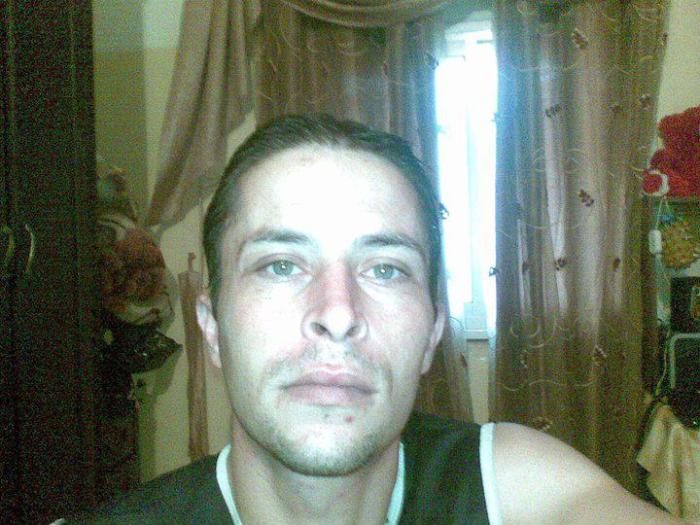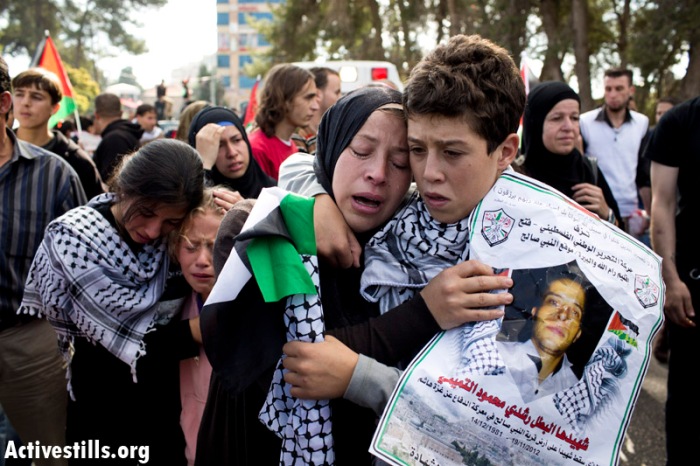By Chaim Levinson and Jack Khoury | Jan.16, 2013
|Investigation finds no reason to use live ammunition in the November shooting death of Rushdie Tamimi, 31, in Nabi Saleh, in the West Bank.
An IDF probe has concluded that in November, Israeli soldiers fired 80 bullets without justification causing the death of a Palestinian man shot in the back during clashes in the West Bank village of Nabi Saleh.
Rushdie Tamimi, 31, was killed when a group of Palestinians in the village began throwing stones toward a road from a long distance, and an army reserve unit tried to disperse them.
The army probe of the November 19 shooting in Nabi Saleh arrived at harsh conclusions regarding the conduct of the IDF company commander and the reserve unit called in to disperse the stone-throwers.
While events were still unfolding, Channel 10 reported that the commander had been relieved of his duties following the shooting. The probe conducted by the army’s Central Command found that the commander had been driving in the vicinity when he saw some 10 youths throwing rocks from a hilltop.
The probe determined that the youths were too far from the road to constitute any real danger. Nevertheless, the commander summoned about 10 reserve soldiers from a nearby army outpost and instructed them to disperse the youths.
However, he neglected to report this immediately to battalion headquarters, which was only 50 meters away.
It turned out that the commander did not report the shooting incident at all, until
Haaretz approached the IDF spokesman two days later for a response to the incident. The army investigation found that the soldiers had fired tear gas at the stone-throwers for an hour and a half. When they ran out of canisters, a medic was sent by jeep to the adjacent outpost to bring back some more. At that point, the commander instructed the soldiers to use live rounds.
They fired 80 bullets, one of which hit Tamimi in the back. For several minutes, the soldiers prevented anyone from giving him medical aid, until they relented. Tamimi was evacuated to a hospital in Ramallah, where he died two days later.
The investigation found there was no reason to use live ammunition. Even when the order was given, the commander did not clearly indicate the target and the reason for opening fire. In professional terms, the troops did not “control the fire.”
The commander claimed the soldiers had not noticed that anyone had been hit, which is why they prevented anyone from approaching Tamimi to provide medical aid. This seemed a dubious claim, though, since the victim was bleeding from the head.
Nabi Saleh has been the scene of frequent weekend protests against settler incursions on villagers’ water supply. The stone-throwing that preceded Tamimi’s death took place during Operation Pillar of Defense in Gaza.
The army sees the incident as a “failure of values,” and the Military Police’s investigation branch has opened a formal inquiry into the fatal shooting.
On Tuesday, a 16-year-old Palestinian boy was shot to death by Israel Defense Forces soldiers in the West Bank village of Budrus, Palestinian sources said. Samir Awad was shot four times in the torso and legs, sources said. He is the fourth Palestinian killed by IDF fire in the last week.
The incidents came a day after Israeli soldiers shot and killed a Palestinian man in the Gaza town of Beit Lahiya near the border with Israel. Gazan officials said Mustafa Abu Jarad, 21, was a farmer. He was taken to Shifa hospital, where doctors said he died from his wounds.
The Israel-Gaza frontier has been mostly calm since November, when eight days of Palestinian rocket fire and Israeli air strikes killed 170 Palestinians and six Israelis.
Since then, four Palestinians have been shot dead by Israeli troops along the Gaza border, most of them in an area Israel has deemed off-limits for several years, citing the risk of attacks on soldier







